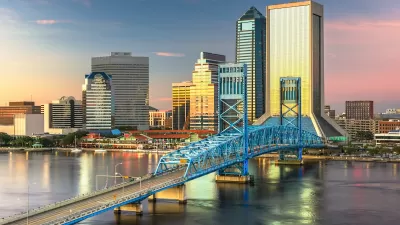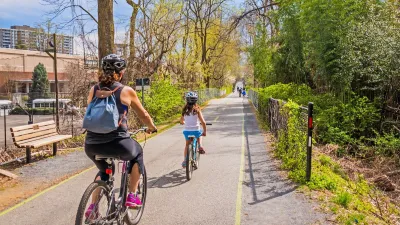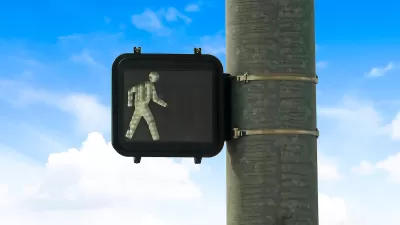Critics of the state’s ‘Be Safe. Drive Smart.’ campaign say the messaging puts the onus on pedestrians and cyclists while failing to address the lack of robust pedestrian and bike infrastructure in many of its cities.

Writing in Next City, Benton Graham describes the criticism faced by the Texas Department of Transportation (TxDOT) for its messaging approach to road safety, which in most cases places the blame for crashes squarely on pedestrians (the top reason for pedestrian deaths, according to the department’s website, is “Pedestrians failing to yield the right-of-way to vehicles”) and cyclists.
Meanwhile, “While the state agency lists safety as its number one priority, it only dedicated around 4% of its funds to safety initiatives in its 10-year plan,” Graham notes. Jay Blazek Crossley, executive director of Farm & City and an advocate for safer roads, says “TxDOT investing in safe, multimodal streets is the most important thing that it can do to make roads less dangerous.”
Advocates like Blazek Crossley see cause for optimism in recent state and local initiatives, however. “In addition to infrastructure changes, Blazek Crossley said there is opportunity for safety improvements through policy changes.” FOr example, “The Lisa Torrey Smith Act passed during the 2021 Texas Legislative Session requires drivers to stop and yield to pedestrians in crosswalks.” TxDOT also recently added a pedestrian design section to its roadway design manual, and cities like Houston are making serious investments in bike and pedestrian infrastructure.
FULL STORY: Texas Is Trying To Fight Pedestrian And Cyclist Deaths With Words. Is It Enough?

Alabama: Trump Terminates Settlements for Black Communities Harmed By Raw Sewage
Trump deemed the landmark civil rights agreement “illegal DEI and environmental justice policy.”

Planetizen Federal Action Tracker
A weekly monitor of how Trump’s orders and actions are impacting planners and planning in America.

The 120 Year Old Tiny Home Villages That Sheltered San Francisco’s Earthquake Refugees
More than a century ago, San Francisco mobilized to house thousands of residents displaced by the 1906 earthquake. Could their strategy offer a model for the present?

LA’s Tree Emergency Goes Beyond Vandalism
After a vandal destroyed dozens of downtown LA trees, Mayor Karen Bass vowed to replace them. Days later, she slashed the city’s tree budget.

Sacramento Leads Nation With Bus-Mounted Bike Lane Enforcement Cameras
The city is the first to use its bus-mounted traffic enforcement system to cite drivers who park or drive in bike lanes.

Seattle Voters Approve Social Housing Referendum
Voters approved a corporate tax to fund the city’s housing authority despite an opposition campaign funded by Amazon and Microsoft.
Urban Design for Planners 1: Software Tools
This six-course series explores essential urban design concepts using open source software and equips planners with the tools they need to participate fully in the urban design process.
Planning for Universal Design
Learn the tools for implementing Universal Design in planning regulations.
Ada County Highway District
Clanton & Associates, Inc.
Jessamine County Fiscal Court
Institute for Housing and Urban Development Studies (IHS)
City of Grandview
Harvard GSD Executive Education
Toledo-Lucas County Plan Commissions
Salt Lake City
NYU Wagner Graduate School of Public Service





























